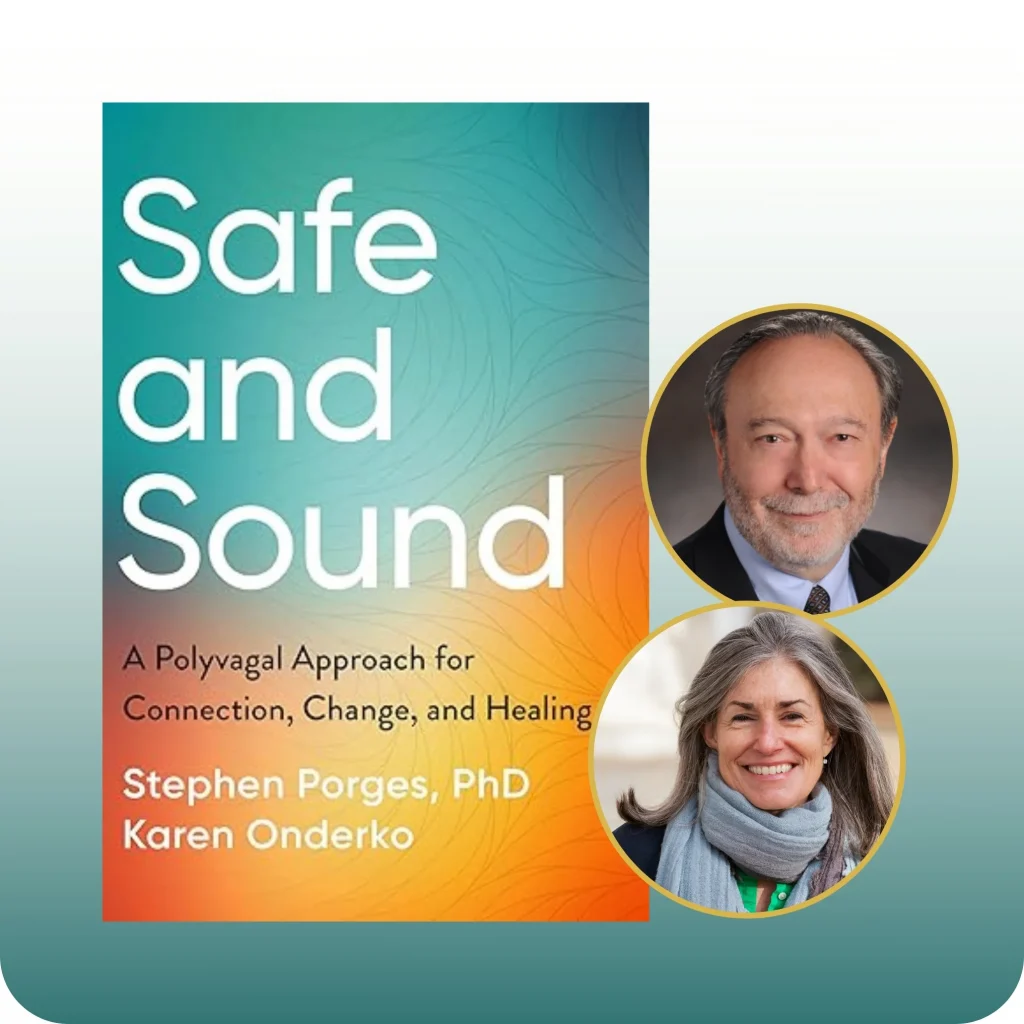Courtesy of the Stuck Not Broken
What [SSP] helps do is alleviate dysregulation. And when you alleviate dysregulation, all those other symptoms can be addressed.
— Karen Onderko
Have your clients tried everything to find relief from anxiety, depression or fear, yet a persistent sense of unease still lingers? What if a gentle nudge toward safety could come from something as fundamental as sound?
In a recent episode of the Stuck Not Broken podcast, host Justin Sunseri, LMFT, dives deep into the Safe and Sound Protocol (SSP) with its pioneers, Dr. Stephen Porges and Karen Onderko. Dr. Porges, the author of Polyvagal Theory, developed SSP based on decades of research, while Karen Onderko was instrumental in bringing it from the lab into clinical practice, through initial testing, development and training. Together, they’ve co-authored their new book, Safe and Sound: A Polyvagal Approach for Connection, Change, and Healing.

Safe and Sound: A Polyvagal Approach for Connection, Change, and Healing is now available for purchase!
The SSP is an evidence-based, non-invasive therapy that involves listening to music specifically filtered to prioritize the frequencies of the human voice. As Karen explains, this auditory input allows the nervous system to be receptive to cues of safety and to “downregulate defense.”
Intrigued by how sound can unlock a deeper sense of calm and connection for your clients? Tune in to the full episode to uncover more about the fascinating science behind SSP and its potential to transform your clinical practice.
Key Topics Discussed in This Episode:
- The Safe and Sound Protocol (SSP) acts as a neural exercise, helping the nervous system practice moving into and out of safety to build resilience.
- The SSP is not about forcing unending bliss, but about gently accessing safety and using it as an anchor, even when discomfort arises.
- As Karen notes, “What’s nice about SSP is, as a bottom-up therapy, it doesn’t require any cognitive processing.”
- Dr. Porges emphasizes that SSP “can accelerate the effects of treatments of others” by changing the client’s state and making their nervous system “more accessible”. He also clarifies, “We’re not treating depression. We’re not treating anxiety. They’re downstream. They’re being manifest because the autonomic nervous system is in this state of dysregulation.”




 © 2025 Unyte Health US Inc.
© 2025 Unyte Health US Inc.